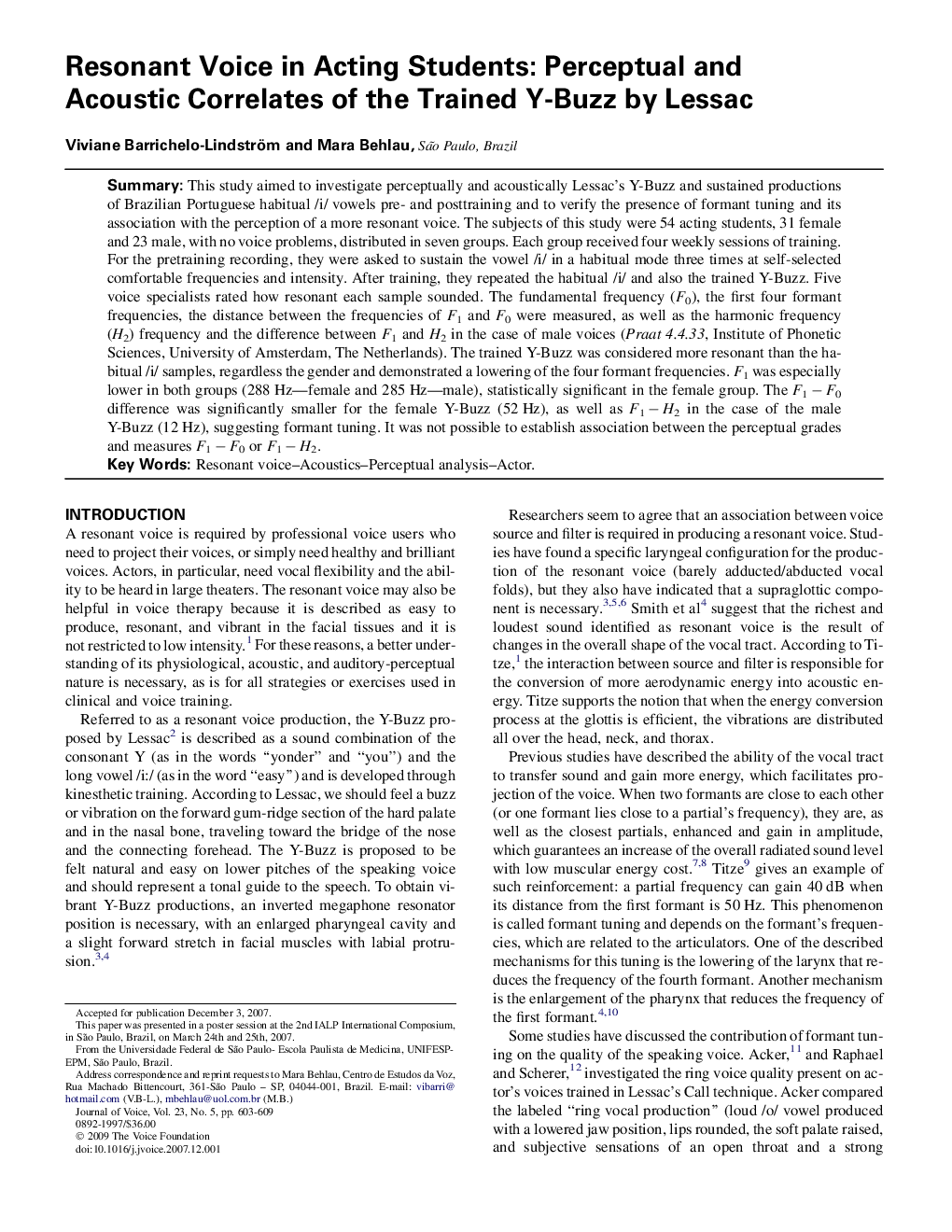| Article ID | Journal | Published Year | Pages | File Type |
|---|---|---|---|---|
| 1102223 | Journal of Voice | 2009 | 7 Pages |
SummaryThis study aimed to investigate perceptually and acoustically Lessac's Y-Buzz and sustained productions of Brazilian Portuguese habitual /i/ vowels pre- and posttraining and to verify the presence of formant tuning and its association with the perception of a more resonant voice. The subjects of this study were 54 acting students, 31 female and 23 male, with no voice problems, distributed in seven groups. Each group received four weekly sessions of training. For the pretraining recording, they were asked to sustain the vowel /i/ in a habitual mode three times at self-selected comfortable frequencies and intensity. After training, they repeated the habitual /i/ and also the trained Y-Buzz. Five voice specialists rated how resonant each sample sounded. The fundamental frequency (F0), the first four formant frequencies, the distance between the frequencies of F1 and F0 were measured, as well as the harmonic frequency (H2) frequency and the difference between F1 and H2 in the case of male voices (Praat 4.4.33, Institute of Phonetic Sciences, University of Amsterdam, The Netherlands). The trained Y-Buzz was considered more resonant than the habitual /i/ samples, regardless the gender and demonstrated a lowering of the four formant frequencies. F1 was especially lower in both groups (288 Hz—female and 285 Hz—male), statistically significant in the female group. The F1 − F0 difference was significantly smaller for the female Y-Buzz (52 Hz), as well as F1 − H2 in the case of the male Y-Buzz (12 Hz), suggesting formant tuning. It was not possible to establish association between the perceptual grades and measures F1 − F0 or F1 − H2.
